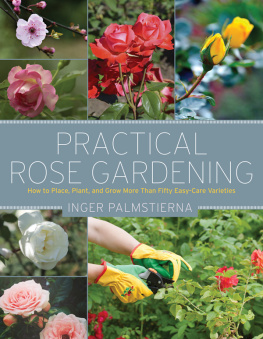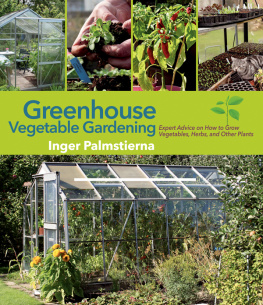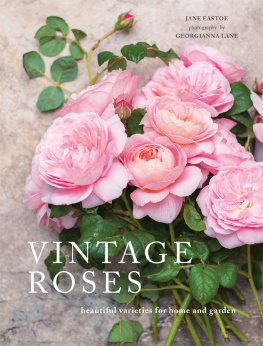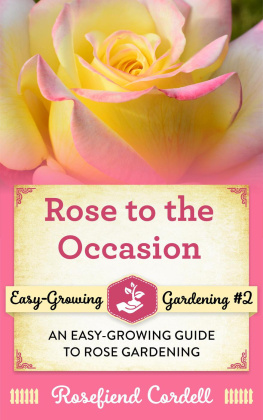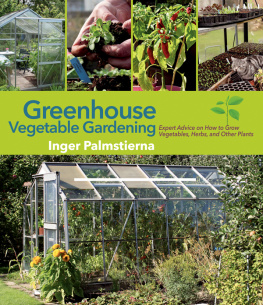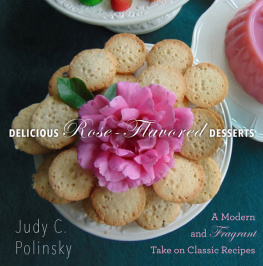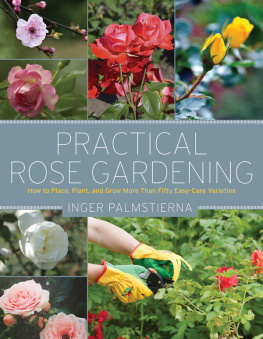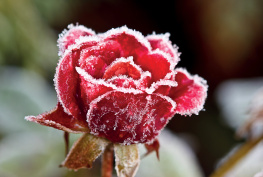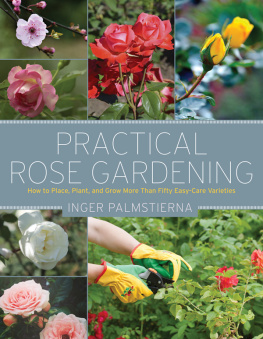COVER PHOTOS:
FRONT : White tree rose Hampton Palace', with a year-old spurge 'Diamond Frost' at its base.
BACK : Pink 'Bella Rosa'. Companion plants in the flowerbed are Shasta daisies, pearly everlasting, lavender, Knautia macedonia, sage, dianthus, iris foliage, red coneflowers and potentilla (cinquefoil) and Russian sage.
BOOK JACKET, INSIDE FLAP : 'Flower Carpet'.
Copyright 2008 Inger Palmstierna and Prisma, Stockholm
First published by Bokfrlaget Prisma, an imprint of Norstedts, Sweden, in 2008 as Rosor: i vackert sllskap by Inger Palmstierna. Published by agreement with Norstedts Agency.
English language edition copyright 2015 by Skyhorse Publishing, Inc.
All rights to any and all materials in copyright owned by the publisher are strictly reserved by the publisher. No part of this book may be reproduced in any manner without the express written consent of the publisher, except in the case of brief excerpts in critical reviews or articles. All inquiries should be addressed to Skyhorse Publishing, 307 West 36th Street, 11th Floor, New York, NY 10018.
Skyhorse Publishing books may be purchased in bulk at special discounts for sales promotion, corporate gifts, fund-raising, or educational purposes. Special editions can also be created to specifications. For details, contact the Special Sales Department, Skyhorse Publishing, 307 West 36th Street, 11th Floor, New York, NY 10018 or .
Skyhorse and Skyhorse Publishing are registered trademarks of Skyhorse Publishing, Inc., a Delaware corporation.
Visit our website at www.skyhorsepublishing.com.
10 9 8 7 6 5 4 3 2 1
Library of Congress Cataloging-in-Publication Data is available on file.
Cover design by Lottie & Jonas Hallqvist, Graffoto AB
Cover photo credit by Inger Palmstierna
Print ISBN: 978-1-62914-740-6
Ebook ISBN: 978-1-63220-094-5
Printed in China
FOREWORD
Yet another book devoted to roses might elicit sighs from some readers, as there are already plenty of publications on the topic in print. However, this book is different from others. While it deals with roses, to be sure, this books emphasis is on how to use roses in a wide variety of settings, rather than simply being a collection of individual rose portraits.
As one might expect, a flower of such renown has had a lot written about it. Even as a child, I turned the pages of the Dutch advertising catalogs again and again, drawn in by the beautiful pictures of the flowers within. So you can imagine my disappointment when, in the 1970s, I began working in a garden center, and realized that the stark-blue dream rose Mainzer Fastnacht resembled a washed-out dishcloth, the deep red Hanne wilted quickly into a faded violet, and the orange Super Star was more salmon pink than brightly fluorescent orange.
As the assortment of roses available on the market is constantly in flux, theres no doubt that a new book on this flower was in order. While there are plenty of portraits of roses in catalogs and product brochures, this book emphasizes how to incorporate them into different garden environments. It also highlights new and healthy species, the especially hardy ones, new bare-root roses and delicate specimens for the south of Sweden. This, along with advice on how to care for the rose, to make it bloom bountifully, and turn it into a low-maintenance part of the garden instead of a plant in need of constant coddling, is the aim of this book. It is an overall guide on the care, use, and choice of roses.
Its easy to fall under the spell of roses. You find yourself entranced by beautiful pictures, only to choose a variety that might not work for you at all. This book covers the whole country and describes roses specifically suited to Swedenwhats possible to grow in beds and/or in combinations. All pictures, with a few exceptions, are taken in Sweden. Knowledgeable and clear advice about irrigation, pruning and diseases is all here. Information is somewhat limited on historic or old-fashioned garden roses, so if youd like to learn more about these types of flowers, there are other more comprehensive volumes that I gladly recommend you seek out. The display of roses, their suitability to different settings, and examples of successful companion plants are also an important part of this book.
I still have favorite, stand-by roses, and many can be found within these pages. I also cover many varieties that are largely untried in Sweden as of yet.
Here is some food for thought. On the clamor for better, more tried, and hardier varieties, I cite Svend Poulsen from his book, Roses :
There was a time when all roses had to have large, petal-rich blossoms; that was the style in the late nineteenth century and it continued well into the twentieth. Im not denying that old-fashioned roses are beautifulfar from it; but its also true that tastes evolve.
It was the light, elegant, and pointy flowers of the tea roses that changed the fashion, and opened rose cultivators eyes to a whole new world of beauty. Unfortunately, those roses were unable to satisfy all the requirements asked of themtheir canes were too pliable and weak, and the flower wasnt hardy enough. It seemed, however, that hybrid tea roses, a sound and sturdy rose specimen, might be able to meet all that was demanded of a rose, but a long time would pass before this development was accomplished. It didnt happen until after 1930, and it was first with the single-blossom polyantha roses that this type of rose experienced a breakthroughthat the simple varieties were finally accepted as a rose for ones garden and that they could bring pleasure.
Svend Poulsen, who worked in the family enterprise Poulsens Roses that launched many of the worlds most famous roses, wrote the above in 1941.
His opinion is critical of the old-fashioned, gaudy, full-blown roses. They were popular, and his customershobbyist gardenersdidnt want simple, single-bloom roses, which at the time were the newest and healthiest of roses. By reprinting this quote, I want to show to you that there are fads even in the world of plants, and that you sometimes need to look past fashion in order to find the plants that will flourish in your own garden.
Inger Palmstierna

A rose dream.
ROSESPRIZED FLOWERS
Many gardeners love to grow roses; for many of them, roses stand for so much more than a mere flower. They symbolize love, and theyre also historically significant. The rose has many advantages, one of which is the fact that no other perennial blooms as abundantly and over such a long time in the flowerbed (modern roses typically are in flower from early summer until the snow falls). There are roses for all occasionsif the planting site is sunnyand they bloom in all imaginable colors except true blue.
Roses are naturally wonderful and multi-faceted plants. Those that we cultivate in our gardens have their origins in species of wild roses. They can be small and hug the ground, or they can be large or more liana-like, climbing high up into the treetops. Roses are found all over the worldthere are species originating in Asia, Europe, and North America. Their appearance varies widely, and they each possess their own set of characteristics. To derive the most enjoyment out of the flower, its best to choose the right rose for the intended place and purpose.
A Plant With History
Cultivating roses is an ancient practice; people have grown them for thousands of years. Over time, the especially beautiful specimensthose with the headiest fragrance, the most dazzling and unusual colors, or longest-blooming flowerswere selected for breeding. The petals were the basis for medicines, essential oils, and perfumes, as well as for food, wine, and decoration.

